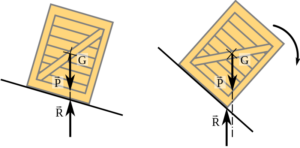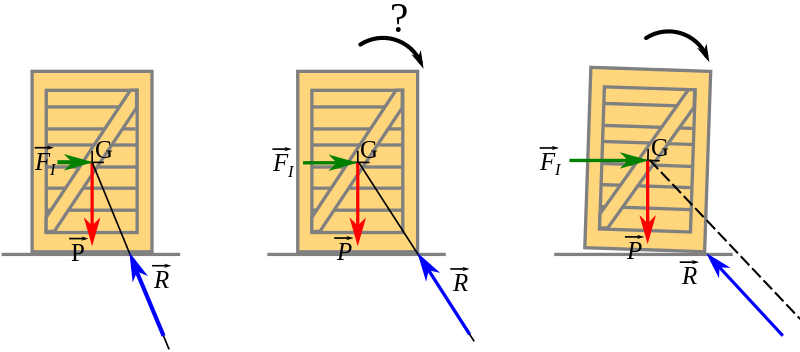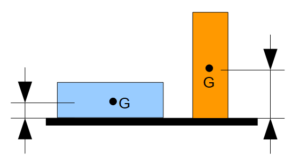To get the best times on your track, you have to choose your vehicle carefully.
Wikipedia explains:
In physics, the center of gravity (CdG), called G, is the point of application of the resultant of the forces of gravity or gravity. As a result, it is clearly dependent on the gravitational field to which the body is subjected and should not be confused with the center of inertia which is the barycenter of masses. It is often assimilated to the latter, but this is only an approximation linked to the fact that in most cases, the gravitational field to which the body is subjected can be considered uniform in the body considered.
The center of inertia of an object, or center of mass, is the point in space where the effects of inertia are applied, that is to say the vector variation of quantity of movement. If the mass of the system is constant, which we will assume for simplicity later, it is also the point where we apply the inertial force vector resulting from the driving acceleration in the case of a non-Galilean frame of reference. In the case where the gravity field can be considered uniform, the center of inertia is the same as the center of gravity. We therefore denote it by G.

Importance of the shape of the object
The shape of the object is important, and especially its width and height.
In this example, the blue and orange objects are the same size.
If we push horizontally in the middle of each object, we can see that the orange one is likely to tip over more easily than the blue one. I would even say that it is not possible to tip over the blue one.
Imagine cars that look like these 2 pieces and that instead of your finger pressing on the object, it is the centrifugal force. You will choose a car that is as low as possible so that the G-spot is as low as possible to increase stability.
Vehicles like Formula 1 are therefore the most advantageous.

